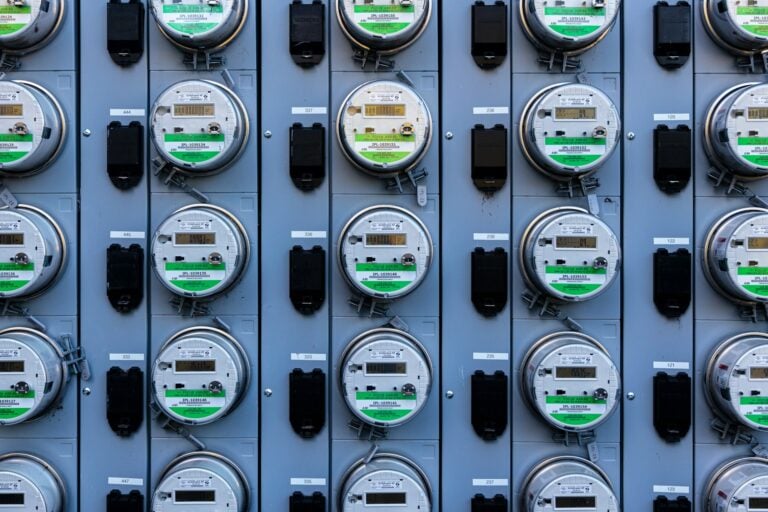Repair or Replace – How to Choose the Most Sustainable Option
 As durable as something might be initially, nothing is indestructible. After an item starts to break down though, you’ll have a choice: repair the existing item or replace it with something new. For many with financial means, the choice is to simply toss out the old item and buy something new. Unfortunately, this is not the most sustainable option.
As durable as something might be initially, nothing is indestructible. After an item starts to break down though, you’ll have a choice: repair the existing item or replace it with something new. For many with financial means, the choice is to simply toss out the old item and buy something new. Unfortunately, this is not the most sustainable option.
However, there are also times when repairing something is not necessarily sustainable either. On one hand, repairing an item helps ensure it doesn’t simply end up in a landfill and cuts down on consumerism, which produces more waste overall. But in other cases, if there is a newer, more energy-efficient option, then upgrading to something new might be the better choice.
Thus, every consumer must choose wisely when presented with this dilemma. Let’s take a look at how consumerism can affect the environment, and in what circumstances does either consumption choice better suit the environment.
Understanding Consumerism and Sustainability
America is one of the largest populations and economies next to China and India. Many argue this is good for economic growth, but it also coincides with the statistic that the U.S. is one of the largest contributors to waste. Waste is, of course, inevitable, but there are better ways to get rid of waste — steps you can take that will reduce the amount of waste that ends up in landfills and natural environments like the ocean every year.
Recycling, for example, is an excellent way to reduce waste and ensure products are reused or disposed of in an environmentally friendly manner. You can also buy products that are made of recycled or more eco-friendly materials. However, even with recycling, millions of tons of waste accumulate in landfills or get dumped and pollute the environment every year.
So, while recycling is highly beneficial, it is not the only answer. Instead, we should consider refraining from buying so many new products in the first place. Consumerism — the societal, insatiable, and materialistic need to constantly buy new things — is incredibly damaging to the planet.
Not only are we more prone to toss things out with a consumerist state of mind, but we’re also encouraging companies to continue producing more wasteful products. The manufacturing process alone uses up precious resources and a significant amount of energy, which contributes to the burning of fossil fuels that release carbon emissions.
Knowing When to Repair or When To Replace
For the reasons stated above, individuals need to be more mindful of how they consume products. However, while limiting the consumption of goods is key, there are times when replacing an old item is more sustainable than keeping and repairing the old one.
When making this decision, there is generally one important factor to take into consideration: the energy impact. Certain items, such as appliances, use up a significant amount of energy. So if an appliance breaks down, such as your refrigerator, it might be time to consider an upgrade over a repair.
The average lifespan of a refrigerator is around ten years, so if yours is any older, it may be more sustainable to consider newer, more energy-efficient models. However, if it breaks before the 10-year mark, it might simply need a repair, especially if it is already an energy-efficient refrigerator.
If there is no energy impact from a broken or old item, then it might be more sustainable to repair or upcycle. If the fabric on a chair is faded or torn, for example, you could reupholster it, upcycle the chair for another purpose — such as a plant stand — or you could donate it to a thrift store where someone else can find a use for it.
Repairs You Can Do Yourself
There are more things that you can repair yourself without needing to call in a professional or pay for an upgrade. There are plenty of online resources that can help you learn to fix things on your own so you can save your time, money, and the environment.
Some examples of things you can repair yourself include:
- Toilets;
- Garbage disposal;
- Dishwasher;
- Kitchen and bathroom cabinets and knobs;
- Showerheads and faucets;
- Furniture;
- Weatherstripping around doors;
- Wallpaper;
- Blinds;
- Washing machine;
- Decks and outdoor furniture;
- Doors;
- Leaking pipes;
- Light fixtures
These are just a few basic examples. People will often replace these items after they get old or break, but many will also look into upgrades to reinvigorate the item — especially if they’re trying to fit a specific interior design aesthetic.
Eco-Friendly Upgrade Options
Although there are plenty of ways you can renovate or upgrade certain items, there are also additional ways to go about the process to make it even more sustainable. For example, when it comes time for an upgrade or a renovation on your house, consider your it’s carbon footprint and what upgrades can help you reduce your carbon output.
Some eco-friendly renovations and upgrades can include:
- Buying reclaimed or vintage pieces;
- Using toxic-free paint;
- Adding windows to improve light and reduce the need for electric-powered lights;
- Installing solar panels;
- Replacing old bulbs with more energy-efficient options.
If, after considering all the sustainable upgrades, it seems like too much, you can always consider buying an eco-friendly home. Even downsizing to a house with smaller square footage can help reduce your environmental impact. These are more extensive undertakings, but if you are committed to living sustainably, they can make a bigger impact.
Take Your Time
Given this information, it may be tempting to reconsider every time you’ve ever thrown away an item when it should’ve been repaired, it’s best to give yourself some grace. Instead, simply ask yourself this question every time an item reaches the end of its lifecycle: how can I repair or replace this?
While simply deciding to replace an item in the moment might not seem like that big of a deal, over time, it can significantly raise your carbon footprint by contributing to the evergrowing waste problem. So it’s always wise to stop and take a moment to think more carefully about replacing or repairing.


